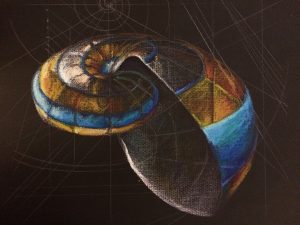Fibonacci sequence
The Fibonacci sequence is an numerical pattern – a series of numbers where a number is found by adding up the two numbers before it. The sequence appears in many settings in mathematics and in other sciences.
Mathematicians have learned to use Fibonacci’s sequence to describe certain shapes that appear in nature. These shapes are called logarithmic spirals, and Nautilus shells are one example. You also see logarithmic spiral shapes in spiral galaxies, and in many plants such as sunflowers. Some plants branch in such a way that they always have a Fibonacci number of growing points. Flowers often have a Fibonacci number of petals, daisies can have 34, 55 or even as many as 89 petals.
It was described by Leonardo Pisano, Italian mathematician better known as Fibonacci, who also popularized Hindu -Arabic numerical system in Western system.



 This project (EDU-ARCTIC) has received funding from the European Union’s Horizon 2020 research and innovation programme under grant agreement No 710240. The content of the website is the sole responsibility of the Consortium and it does not represent the opinion of the European Commission, and the Commission is not responsible for any use that might be made of information contained.
This project (EDU-ARCTIC) has received funding from the European Union’s Horizon 2020 research and innovation programme under grant agreement No 710240. The content of the website is the sole responsibility of the Consortium and it does not represent the opinion of the European Commission, and the Commission is not responsible for any use that might be made of information contained.